Japan once had between 30,000 and 40,000 castles, but today, only about 200 are open to the public. Even more remarkable, only 12 castles have original tenshu (castle towers) that have survived since the Edo period or earlier. But what exactly is a Japanese castle? And what is a “tenshukaku”?
In this article, we’ll explore the origins, history, and evolving roles of Japanese castles, why so many disappeared, and highlight three of the best-preserved original castle towers you can visit today!

Also, we will talk about some hotels stays from which you can have a view of the castles.
- What Are Japanese Castles? What Is a Tenshukaku?
- The Origins of Japanese Castles
- The Roles of Castles in Different Eras
- Asuka & Nara Periods (7th–8th Century): Ancient Mountain Fortresses
- Nara & Heian Periods (8th–12th Century): Northern Defense Forts
- Kamakura & Nanbokucho Periods (12th–14th Century): Rise of Medieval Mountain Castles
- Sengoku Period (15th–16th Century): Birth of Castle Towns
- Edo Period (17th–19th Century): Symbols of Power
- Why Did Most Japanese Castles Disappear?
- Top 3 Must-Visit Castles with Original Tenshukaku
- Japanese Castles in the Game Nioh 2
- Conclusion
What Are Japanese Castles? What Is a Tenshukaku?
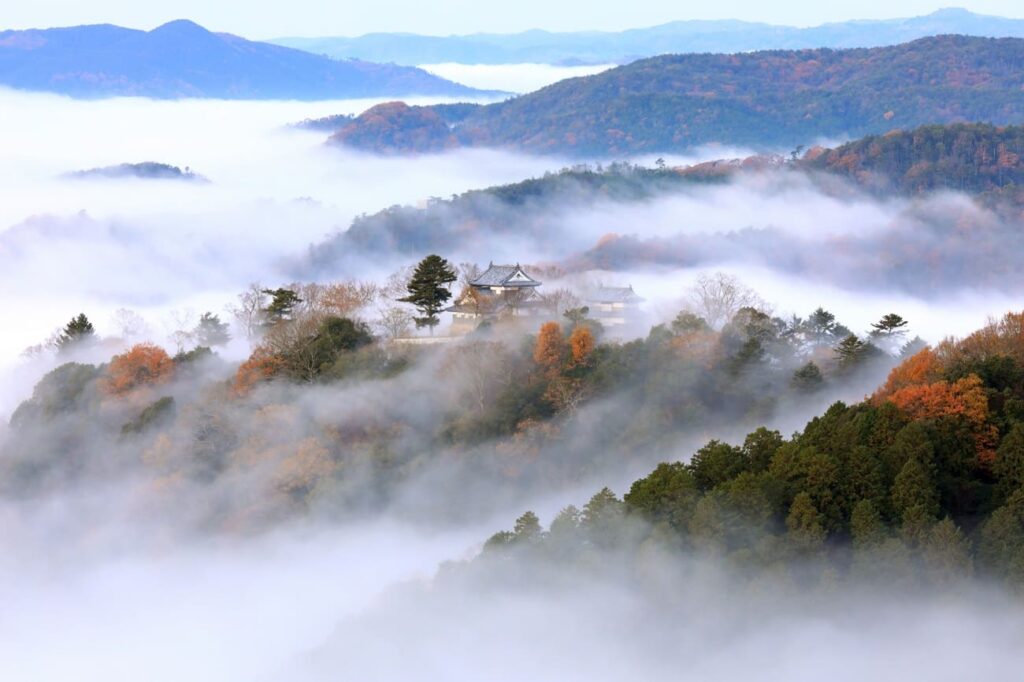
A Japanese castle was originally a military and governmental facility. These structures typically featured stone walls, moats, and a tenshukaku, which served as the symbolic centerpiece of the castle.
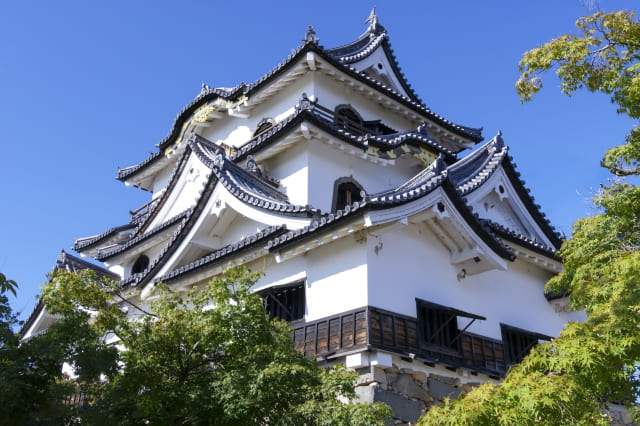
What is a Tenshukaku? A tenshukaku (also called tenshu) is the highest structure in a castle’s main compound, originally developed from “watchtowers” during the Warring States period. From the Azuchi-Momoyama period onwards, castle lords built grand and luxurious castle towers as symbols of their power.
The Origins of Japanese Castles
The origins of Japanese castles can be traced back to the Yayoi period (3rd century BC – 3rd century AD) with the development of “moated settlements” (Kangō-shūraku). These early fortifications surrounded villages with moats to protect stored rice and seeds. Initially designed to keep out wild animals, they later evolved into defensive structures against human threats.
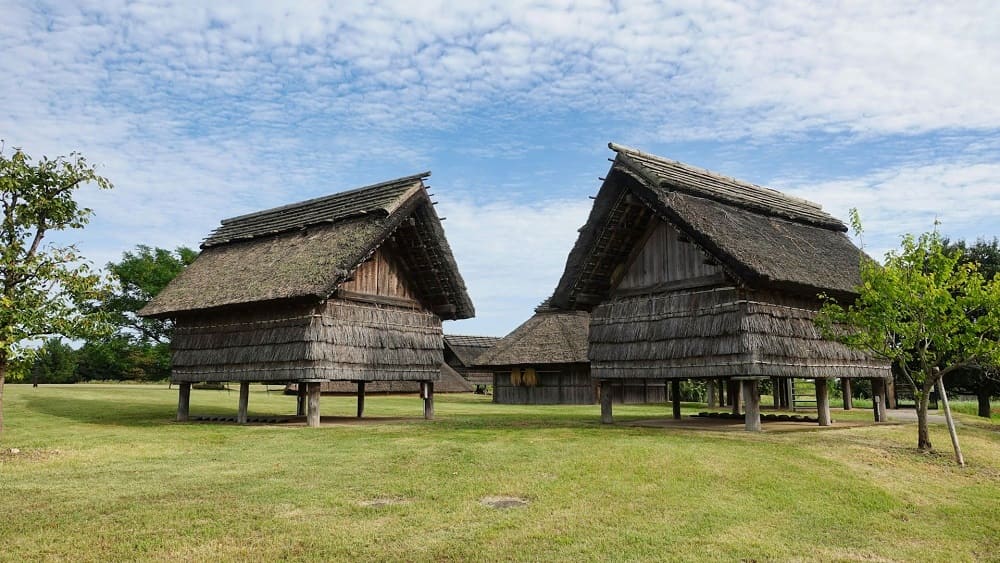
A prime example is the Yoshinogari Ruins, featuring watchtowers and double moats—early prototypes of Japanese castle defenses. Today, Yoshinogari is recognized as one of Japan’s “Top 100 Castles.”
The Roles of Castles in Different Eras
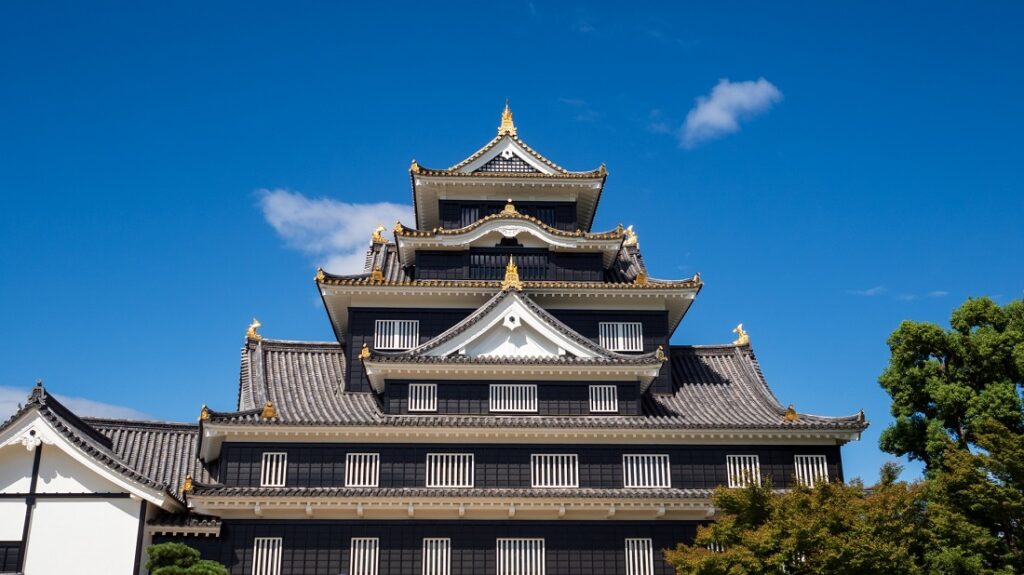

Let’s learn about the role of Japanese castles!
Asuka & Nara Periods (7th–8th Century): Ancient Mountain Fortresses
To guard against invasions from the Asian continent, Japan constructed defensive forts, particularly in western Japan.
- Mizuki Fortress (Fukuoka): Japan’s first known castle.
- Ōno Castle (Fukuoka): Built by immigrants from the Korean kingdom of Baekje.
Nara & Heian Periods (8th–12th Century): Northern Defense Forts
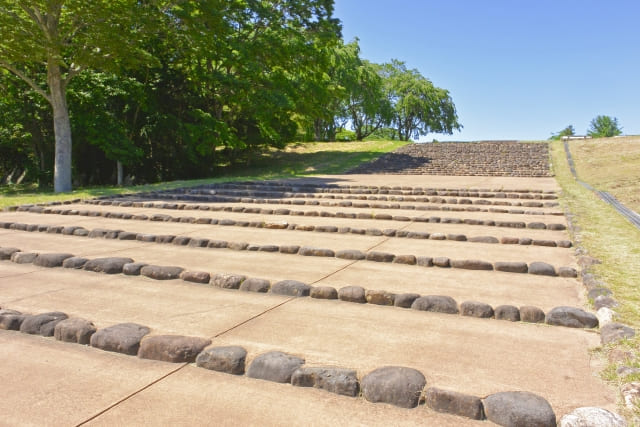
In northern Japan, “Jōsaku” fortresses were built to extend imperial control over the Emishi people.
Tagajo (Miyagi) and Akita Castle (Akita) became major political and economic centers.
Kamakura & Nanbokucho Periods (12th–14th Century): Rise of Medieval Mountain Castles
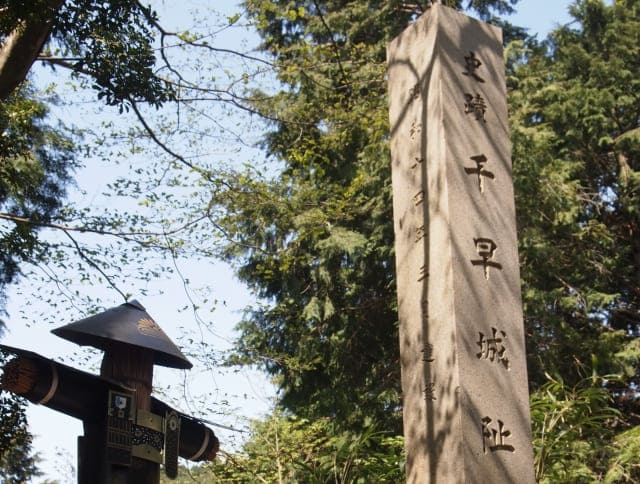
As samurai clans gained power, they built fortified mountaintop strongholds for defense.
Chihaya Castle (Osaka): Defended by Kusunoki Masashige against the Kamakura shogunate.
Sengoku Period (15th–16th Century): Birth of Castle Towns
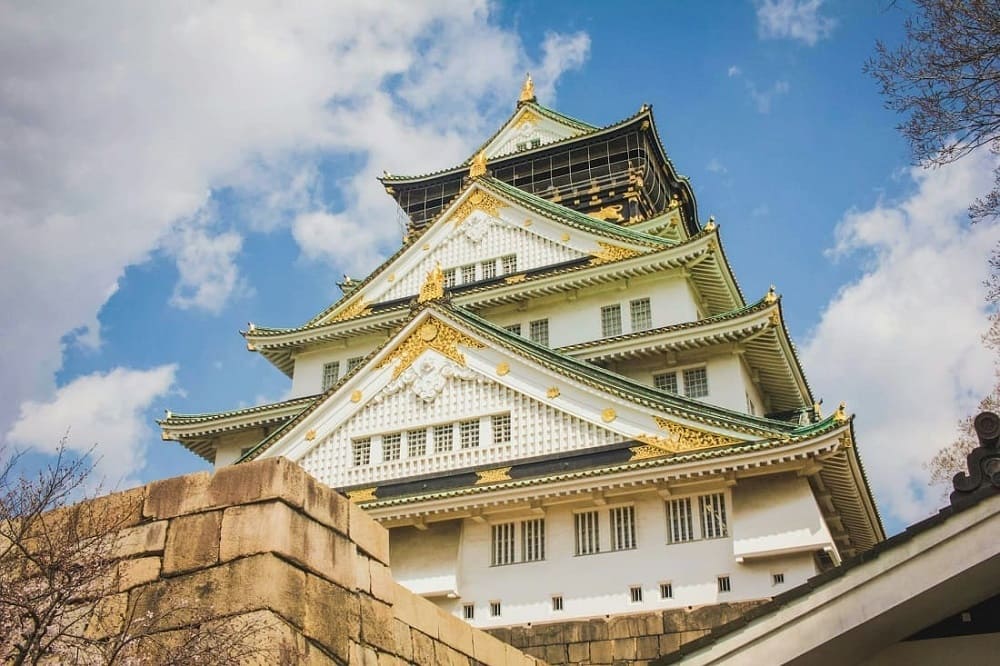
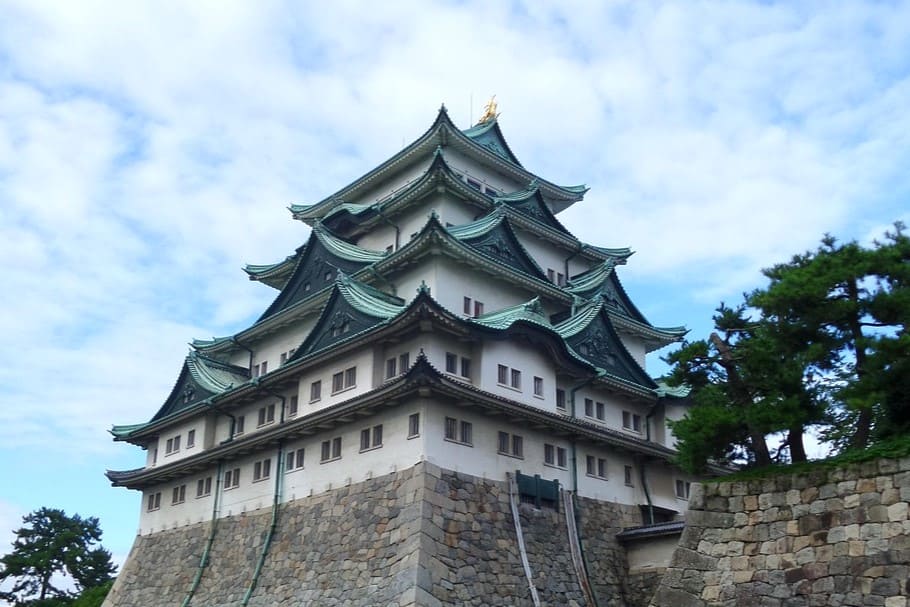
During the Warring States period, castles evolved from simple forts into economic and political hubs.
- Hirayama-style Castles (on hills): Examples include Osaka Castle.
- Hirajiro-style Castles (on flatland): Nagoya Castle is a notable example.
Around this time, castle towns formed around these fortresses, where samurai, merchants, and artisans lived.
Edo Period (17th–19th Century): Symbols of Power
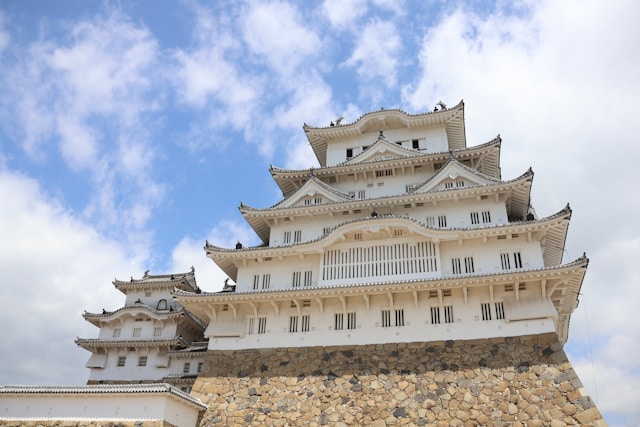
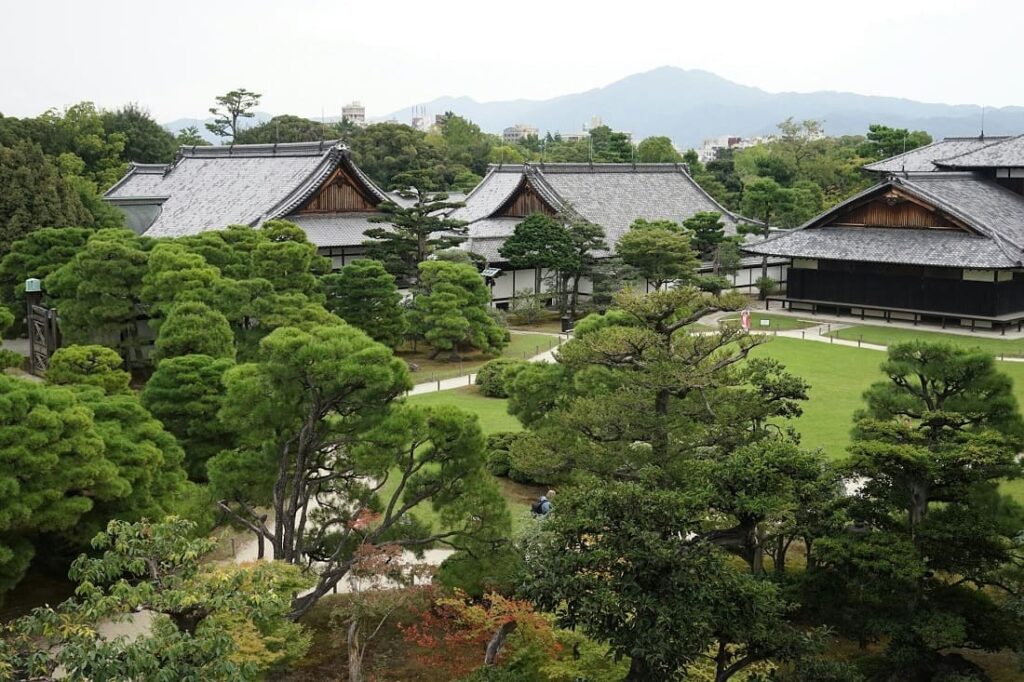
With Japan entering a peaceful era under Tokugawa rule, castles became symbols of authority rather than military fortresses.
- Himeji Castle (Hyogo): Known as “White Heron Castle” for its stunning white walls.
- Nijo Castle (Kyoto): Built by Tokugawa Ieyasu.
Why Did Most Japanese Castles Disappear?
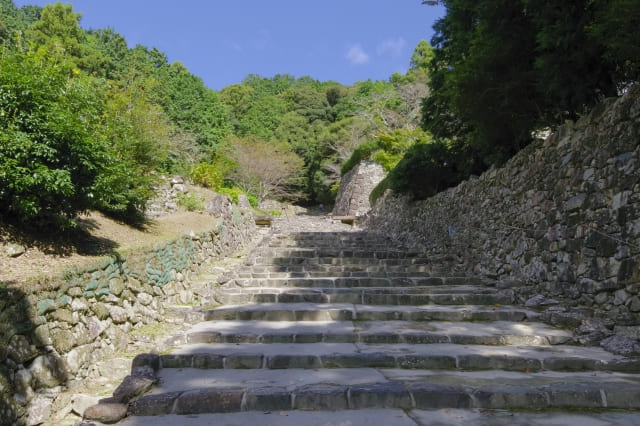
Three major factors led to the decline of castles in Japan:
- The “One Castle per Domain” Law (1615)
- The Tokugawa shogunate limited each feudal domain to one castle, leading to the dismantling of many others.
- The Castle Abolishment Edict (1873)
- The Meiji government deemed castles unnecessary, resulting in widespread demolition.
- World War II Air Raids (1945)
- Many castles, including Osaka Castle, were destroyed in wartime bombings.

Today, only 12 original castle towers remain intact.
Top 3 Must-Visit Castles with Original Tenshukaku

Let’s go!
1. Himeji Castle (Hyogo)

- Nicknamed “White Heron Castle” for its elegant white exterior.
- Japan’s first UNESCO World Heritage Site castle.

This is the castle I really want to visit this year!
The hotels you can see Himeji castle
| Hotel monterey Himeji |
| Book a room with “castle view” |
| Hotel Nikko Himeji |
| North side rooms on 13th and 14th floor have a view of Himeji castle. (Suite, Nikko twin, etc) |
2. Matsumoto Castle (Nagano)
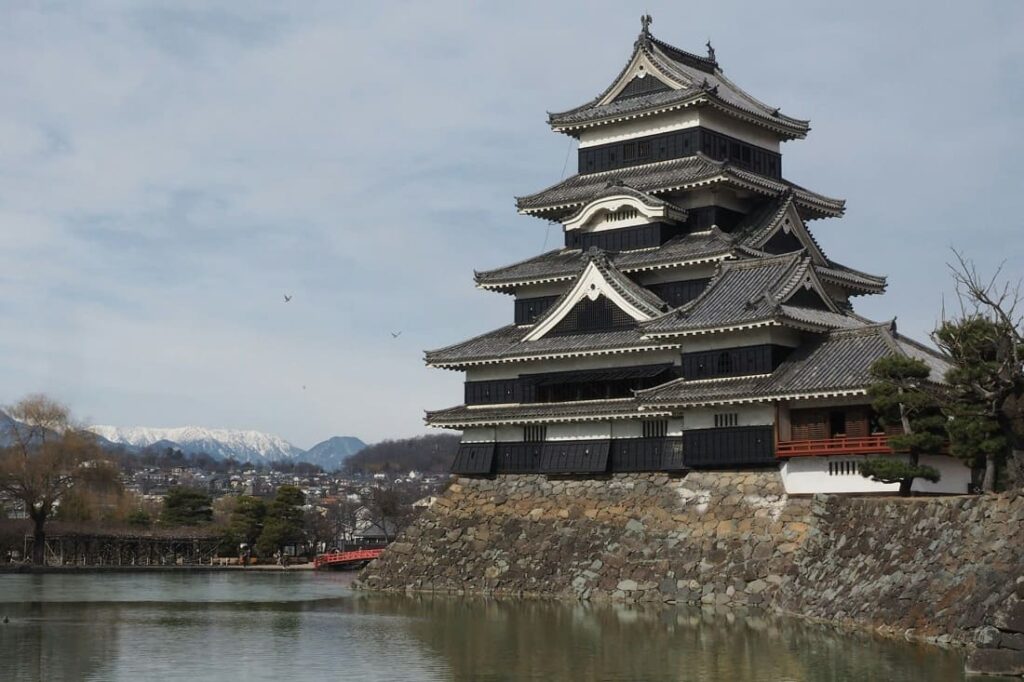
- Japan’s oldest existing five-tiered castle tower.
- Known as “Crow Castle” due to its striking black exterior.

I love the color of Crow Castle!
The hotel you can see Matsumoto castle
| Matsumoto Marunouchi hotel |
| Book Suite or Deluxe Twin |
3. Hirosaki Castle (Aomori)
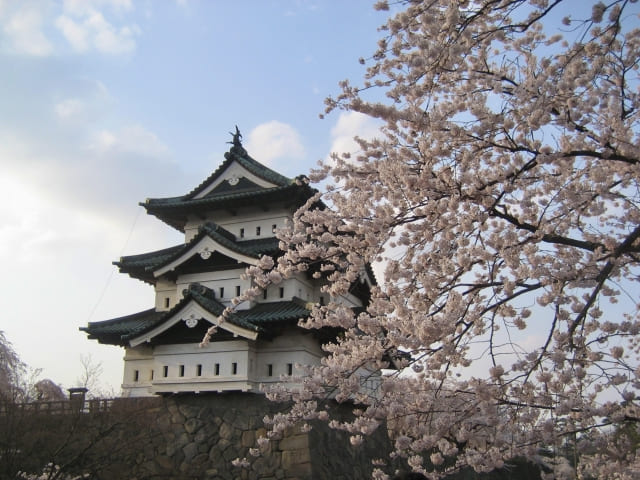
- The only remaining original castle tower in northern Japan.
- Famous for its breathtaking cherry blossoms in spring.

No castle view hotel information for now…
If you are interested in Samurai, please check the article below as well.
Japanese Castles in the Game Nioh 2
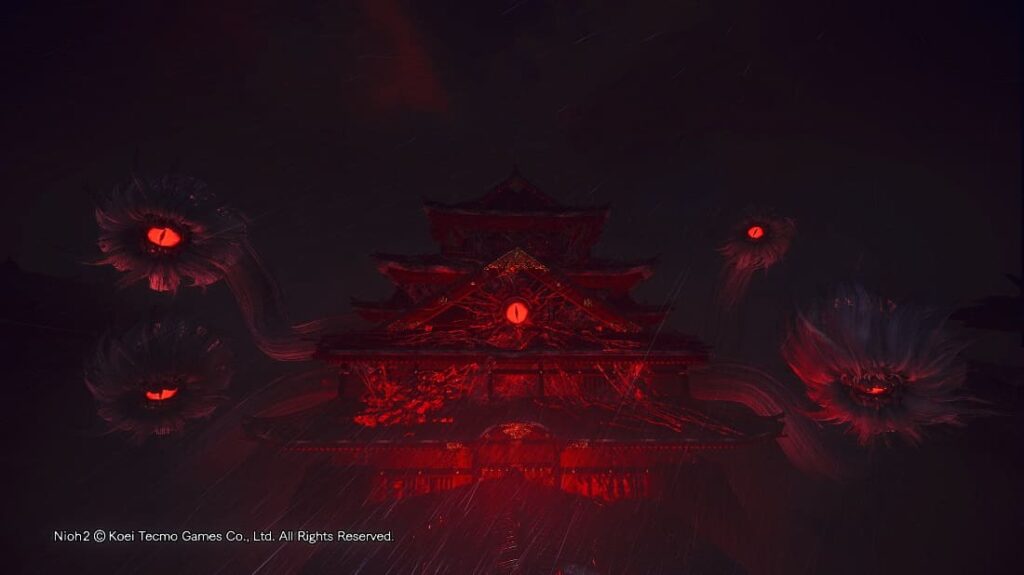
The popular video game Nioh 2 features famous Japanese castles, including:
- Osaka Castle: The residence of Toyotomi Hideyoshi.
- Azuchi Castle: Built by Oda Nobunaga.
Exploring these castles in-game is a fun way to experience Japanese history!

Yokai Osakabehime in Himeji castle appears in Nioh 2 as well!
Conclusion
Japanese castles evolved from military outposts to political centers and, eventually, symbols of power. However, due to the “One Castle per Domain” law, the Castle Abolishment Edict, and wartime destruction, their numbers drastically declined. The 12 remaining original castle towers are invaluable cultural treasures, offering a glimpse into Japan’s rich history.
If you have the chance, visiting one in person is highly recommended!

If you are interested in Japanese culture, and you love gaming, you may love these games! Let’s play!

Yes! Let’s play!



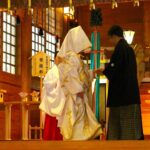

Comments